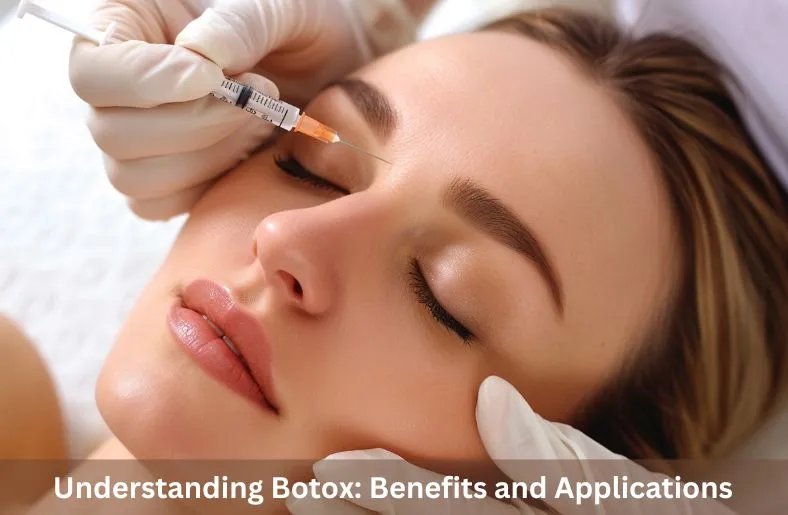What is Botox?
Botulinum toxin, often known as “Botox,” is a highly purified neurotoxic protein that has completely changed the medical and cosmetic fields. Manufactured from the bacterium Clostridium botulinum, Botox was initially used to treat eye muscle disorders. Since then, it has developed to include a wide variety of uses. For those contemplating Botox and fillers near me, it’s vital to understand how Botox works to address various needs effectively. The demand for Botox has surged worldwide for aesthetic purposes, and its efficacy in treating diverse medical conditions makes it one of the most popular non-surgical treatments available today.
How Does Botox Work?
For Botox to work, nerve impulses in the muscles it injects must be blocked. This inhibition prevents the muscles from contracting, thereby relaxing and softening wrinkles. The science is straightforward yet fascinating; the neurotoxin temporarily paralyzes muscle activity by obstructing the release of acetylcholine at the neuromuscular junction. This action can be particularly beneficial in aesthetic applications and in treating conditions such as chronic migraines, muscle spasms, and even severe sweating. Understanding this mechanism allows individuals to appreciate how targeted and precise Botox treatments can be, leading to more thoughtful and informed decisions regarding its use.
Cosmetic Uses of Botox
The most prevalent use of Botox is in the cosmetic industry, where it addresses aesthetic concerns such as wrinkles and fine lines. Botox injections can smooth crow’s feet, frown lines, and forehead creases, providing a youthful and rejuvenated appearance. The technique is a good choice for people looking for non-invasive cosmetic improvements since it is quick—usually taking only 10 to 15 minutes—and causes no discomfort. The results manifest generally within a few days and can last up to six months, after which follow-up treatments are necessary to maintain a youthful look. This ease of use and limited downtime contribute significantly to Botox’s massive appeal in the cosmetic field.
Medical Applications of Botox
Beyond its cosmetic allure, Botox has numerous FDA-approved medical applications. It is used to treat chronic migraines, severe underarm sweating (hyperhidrosis), overactive bladder, and even certain neurological disorders such as cervical dystonia. According to Medical News Today, It is considered a highly effective treatment for these ailments, offering symptomatic relief and significantly improving sufferers’ quality of life. Its usage continually expands as research uncovers new therapeutic potentials, making Botox a versatile tool in modern medicine.
Benefits and Risks
Like any medical treatment, Botox has its share of benefits and risks. The benefits include minimal downtime, quick results, and treating multiple conditions without invasive procedures. These advantages make it a go-to solution for many. However, it’s essential to be aware of the potential risks, ranging from mild side effects like bruising and swelling to more severe complications like allergic reactions. Some individuals may experience temporary responses such as headaches or flu-like symptoms. Knowing these risks can empower patients to make more informed decisions and have realistic expectations regarding Botox treatments.
Choosing a Qualified Provider
Selecting a qualified provider is paramount to achieving optimal results and minimizing risks. When considering Botox, look for board-certified practitioners with extensive experience with cosmetic and medical injections. Trusted resources like The Washington Post can provide valuable information on FDA approvals and best practices. An experienced provider not only ensures the effectiveness of the treatment but also offers essential guidance for pre- and post-treatment care, maximizing the benefits and ensuring patient safety.
What to Expect During a Botox Treatment
A typical Botox treatment starts with a thorough consultation where the practitioner assesses your needs and discusses potential outcomes. A numbing agent follows this to minimize discomfort during the injections. For the majority of patients, the treatment, which typically takes less than an hour, only causes mild discomfort. The doctor injects tiny quantities of Botox into the target muscles using a small needle. Achieving the intended results for medical symptom alleviation or cosmetic benefits requires this level of accuracy. Being aware of what to anticipate helps reduce anxiety and get patients ready for a seamless and fruitful course of therapy.
Also Read about Benefits of Witch Hazel Cleansing Wipes
Aftercare Tips
Post-treatment care is essential to maximize the advantages of Botox and minimize any potential adverse effects. Common aftercare tips include avoiding strenuous exercise and not lying down for at least four hours post-injection. To lower the chance of bruising, it’s also suggested to avoid drinking alcohol and to take blood thinners right before and after the procedure. Following the specific guidelines provided by your practitioner will ensure optimal results and a swift recovery. Each practitioner might have additional personalized recommendations based on the treatment and individual patient needs, so it’s essential to adhere closely to these instructions.





